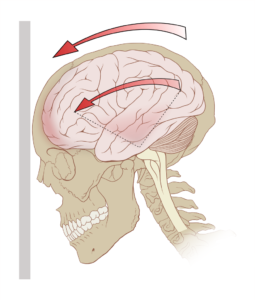Researchers provide new insights into sex differences in concussion vulnerability and recovery
Research from the University of Pennsylvania sheds light on why females are more prone to concussions and experience longer recovery times compared to males.
The study, published in Acta Neuropathologica [1], reveals key structural differences in the brain that may underlie this disparity.
Concussions, or mild traumatic brain injuries (TBIs), affect approximately 50 million individuals worldwide each year. While males account for the majority of emergency department visits for concussion, this is primarily due to their greater exposure to high-risk activities. However, recent observations indicate that female athletes have a higher rate of concussion and appear to have worse outcomes than their male counterparts participating in the same sport.
“Clinicians have observed for a long time that females suffer from concussion at higher rates than males in the same sports, and that they take longer to recover cognitive function, but couldn’t explain the underlying mechanisms of this phenomenon,” said senior author Douglas Smith, MD, a professor of Neurosurgery and director of Penn’s Center for Brain Injury and Repair.
Loss of sodium channels after concussion
The study, conducted using large animal models of concussion, identified significant differences in brain structures between males and females after a concussion. Researchers found that females had a higher population of smaller axons, which were demonstrated to be more vulnerable to injury. Additionally, females exhibited greater loss of sodium channels after concussion, which are essential for communication between brain cells.
Axons are delicate structures that form bundles of white matter in the brain, playing a crucial role in learning and communication between different brain regions. When axons are damaged, as in the case of a concussion, the sodium channels that power the brain’s electric grid are also impaired, leading to a loss of signalling and subsequent cognitive impairment.
Biomarkers for concussion
“The variances in brain structures of females and males not only illuminate why this disparity exists, but also exposes biomarkers, such as axon protein fragments, that can be measured in the blood to determine injury severity, monitor recovery, and eventually help identify and develop treatments that help patients repair these damaged structures and restore cognitive function,” Smith explained.
The findings have broader implications beyond concussion, as Smith noted: “If female brains are more vulnerable to damage from concussion, they might also be more vulnerable to neurodegeneration, and it’s worth further research to understand how sex influences the structure and functions of the brain.”
This study not only provides insights into the underlying mechanisms behind sex differences in concussion vulnerability and recovery but also highlights the potential for identifying biomarkers and developing targeted treatments to address the cognitive deficits associated with these injuries.
Reference:
- Song, H., Tomasevich, A., Paolini, A. et al. Sex differences in the extent of acute axonal pathologies after experimental concussion. Acta Neuropathol 147, 79 (2024). https://doi.org/10.1007/s00401-024-02735-9


